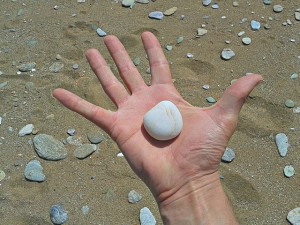- Calls to this hotline are currently being directed to Within Health or Eating Disorder Solutions
- Representatives are standing by 24/7 to help answer your questions
- All calls are confidential and HIPAA compliant
- There is no obligation or cost to call
- Eating Disorder Hope does not receive any commissions or fees dependent upon which provider you select
- Additional treatment providers are located on our directory or samhsa.gov
Compulsive Eating, Binge Eating Disorder & Bulimia – Can I Have All Three?
Contributed By: Rachel Porter, PsyD, Carolina House, Clinical Director

- Definitions: What are these things?
- What does this question mean to someone struggling with these issues?
- What does this question mean to professionals?
The Definitions You Should Know
The first important distinction is that compulsive eating is a behavior, whereas Binge Eating Disorder and Bulimia are both serious mental illnesses. Compulsive eating may be a part of each of these disorders, but is not an illness. Compulsive eating is very much defined by the word “compulsion.” Dictionary.com provides the psychologically oriented definition of compulsion as “a strong, usually irresistible impulse to perform an act, especially one that is irrational or contrary to one’s will.”
So to compulsively eat is to eat in a way that is in response to a strong, irresistible urge. Compulsively eating isn’t quantifiable; there is not an “amount” of food that might be involved in compulsive eating. Compulsive eating is not done in response to hunger cues; rather, it is often done based on other sorts of cues: visual, olfactory, or emotional are at the top of the list.
Bulimia as a Part of Binge Eating Disorder
Moving on, both Binge Eating Disorder and Bulimia Nervosa are partially defined in relation to binge eating behavior. Binge eating is defines, generally, as eating a significantly larger than normative amount of food in a discreet period of time.
That said, the Binge Eating Disorder Association is clear that the amount of food, and time spent consuming the food, varies widely by person. This assertion is certainly supported by all anecdotal evidence within my own work. Binging is also defined by a feeling of loss of control of one’s eating.
Binge eating is the primary symptom of Binge Eating Disorder, though many individuals who have BED also engage in various degrees of restriction and compensatory behaviors- these are just not what defines the eating cycle, nor are they required for the diagnosis.
The Behaviors that Define Bulimia

Bulimia Nervosa is defined by the cycle of binging and purging– one leads to the other, and so on and so forth. Again, compulsive eating absolutely may be an aspect of Bulimia, but it is not a defining characteristic.
Given that compulsive eating can and often is a part of both Bulimia and Binge Eating Disorder, it seems clear that one part of this question is answered! What remains is: Can I have both Bulimia and Binge Eating Disorder?
For those Suffering
An important thing to remember is that eating disorders exist along a spectrum. It’s extremely common to symptom-switch and, at different times, struggle with different forms of an eating disorder. My encouragement to those suffering is to worry less about labels and more about accepting that you do have an eating disorder and you do deserve help for your struggles!
As a treatment provider, I often hear from my clients that they “aren’t sick enough” to receive care. At times, this belief comes from not fitting all the markers of a specific disorder. At other times, it comes from a pervasive sense of low self-esteem and a belief that they deserve to struggle and suffer and be in pain.
You Don’t Have to Hit Rock Bottom to Get Help

Ask yourself why it matters to you which diagnoses you carry – what are you looking for here? Is it validation of the pain you feel? You have it. Is it the words to use to express your pain to someone else? My suggestion is to discuss the behaviors you use, and why you use them. What drives these behaviors? And how do they impact your daily life? These are the issues to begin focusing on as you go on your path to healing.
For Providers
One of the first things I learned in graduate school, when it comes to diagnosis, is a pretty simple dictum: Less is more.
While we, as providers, want to communicate a full picture of our clients to other providers (as the usefulness of diagnosis is often debated [which is an article for another time, to be sure], one way in which diagnosis is commonly used is a quick way to communicate a client’s challenges to other providers, and make sure everyone is on the same page in treatment), putting multiple diagnoses where one will suffice muddies the waters far more than clarifying them.
Finding the Primary Driving Behavior

The challenge is to find the primary driving behavior, and allow that to guide your diagnosis. Does your client binge in order to seek the purge? This would be Bulimia. Do they seek out binges and use other, potentially compensatory or restrictive behaviors, in order to support this binge? That’s more in line with BED. It is absolutely essential to remember that the people you are treating will very rarely (if ever) match the exact list of symptoms in the DSM. They are full people, after all!
So: Can you have both BED & BN? Technically, no. Does that mean you don’t experience symptoms of both? No. Does that mean you might, at different times, experience each one? No. But most of all: It doesn’t mean you don’t need care. You do need it, and deserve it.
The opinions and views of our guest contributors are shared to provide a broad perspective of eating disorders. These are not necessarily the views of Eating Disorder Hope, but an effort to offer discussion of various issues by different concerned individuals.
Last Updated & Reviewed By: Jacquelyn Ekern, MS, LPC on April 18th, 2015
Published on EatingDisorderHope.com
